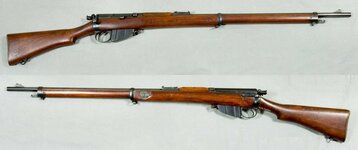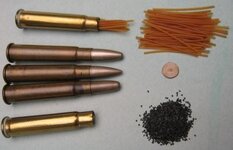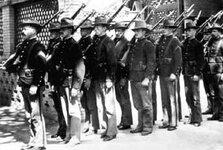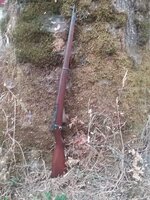- Messages
- 126
- Reactions
- 546
Follow along with the video below to see how to install our site as a web app on your home screen.
Note: This feature may not be available in some browsers.
... I purchased an Ishapore 2A about five years ago to convert into a carbine along the lines of the No5 or really along the lines of what Golden State Arms did back in the '50s and '60s...
...
View attachment 423147
View attachment 423149
...
I think It came out ok.

I do have just a couple of questions for you that haven't been addressed so far in the thread if you don't mind:
Thanks for the inspiration!
- Did you cut the forend off just ahead of the inner band hole in the stock as it appears? (just behind the original position of the front band... the item marked #2 in the diagram below) and if so, I'm assuming you relocated the channel for the barrel band...
- Is the flash hider you sourced the large diameter version from Numrich? ( Flashhider, Conversion - Pre-Drilled. Blued Steel. Newly Manufactured. )


Or, as we say in the States, US Winchester Lee Navy. Navy? For MARINES! (and I suppose sailors too on occasion)....
Mr James Paris Lee, whose name is remembered every time we use it in the rifle to which he gave his name, was an American firearms designer. He also designed the US Navy Lee rifle......



Ok, you win Tac... Sorry for adding an "s" to pellet.
The thread is yours
Or, as we say in the States, US Winchester Lee Navy. Navy? For MARINES! (and I suppose sailors too on occasion)
Oorah!
View attachment 488640
Ahead of it's time in many ways. High velocity, small bore, clip loaded.
View attachment 488641
View attachment 488642
Mr James Paris Lee, whose name is remembered every time we use it in the rifle to which he gave his name, was an American firearms designer. He also designed the US Navy Lee rifle.
So you really have no good reason to miss his name out, right?
tac